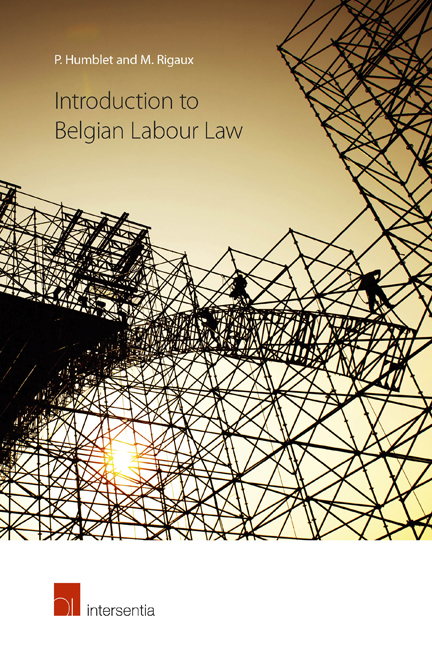Book contents
- Frontmatter
- Preface
- Contents
- List of Abbreviations
- PART I EMPLOYMENT LAW
- I THE CONTRACT OF EMPLOYMENT
- II CONCLUDING THE CONTRACT
- III EMPLOYMENT
- IV TERMINATION OF EMPLOYMENT
- V SPECIAL AND DEVIATING TYPES OF EMPLOYMENT CONTRACTS
- PART II INDUSTRIAL RELATIONS LAW
- I FREEDOM OF ASSOCIATION
- II TRADE UNIONS AND EMPLOYERS’ ASSOCIATIONS
- III INSTRUMENTS FOR SOCIAL DIALOGUE
- IV FUNDS FOR SOCIAL SECURITY
- V INDUSTRIAL ACTION
- Chapter 1 Strikes, Lock-outs and Factory Occupation
- Chapter 2 Settlement of Industrial Conflicts by Mediation and Conciliation
- Chapter 3 Regulations for Settling Industrial Disputes
- Chapter 4 Settlement of Industrial Disputes by the Courts
- In Cauda
- General Bibliography
- E-addresses
Chapter 2 - Settlement of Industrial Conflicts by Mediation and Conciliation
from V - INDUSTRIAL ACTION
Published online by Cambridge University Press: 13 December 2017
- Frontmatter
- Preface
- Contents
- List of Abbreviations
- PART I EMPLOYMENT LAW
- I THE CONTRACT OF EMPLOYMENT
- II CONCLUDING THE CONTRACT
- III EMPLOYMENT
- IV TERMINATION OF EMPLOYMENT
- V SPECIAL AND DEVIATING TYPES OF EMPLOYMENT CONTRACTS
- PART II INDUSTRIAL RELATIONS LAW
- I FREEDOM OF ASSOCIATION
- II TRADE UNIONS AND EMPLOYERS’ ASSOCIATIONS
- III INSTRUMENTS FOR SOCIAL DIALOGUE
- IV FUNDS FOR SOCIAL SECURITY
- V INDUSTRIAL ACTION
- Chapter 1 Strikes, Lock-outs and Factory Occupation
- Chapter 2 Settlement of Industrial Conflicts by Mediation and Conciliation
- Chapter 3 Regulations for Settling Industrial Disputes
- Chapter 4 Settlement of Industrial Disputes by the Courts
- In Cauda
- General Bibliography
- E-addresses
Summary
SECTION 1. CONCILIATION AND MEDIATION
Mediation means settling a dispute with the help of an objective third party. It usually covers dispute resolution procedures such as arbitration and reconciliation.
In arbitration, a third person is asked to issue an opinion on the grievances of the conflicting parties on the basis of the information given to him. His opinion is legally binding on the two parties.
In the case of conciliation, the intervention of the third party or mediator goes much further: he is expected to reconcile the conflicting parties.
Arbitration is almost never used as a dispute resolution mechanism in Belgian industrial relations. The legislator and the social partners have clearly opted for conciliation.
SECTION 2. CONCILIATION PROCEDURES
As in most other Western European legal systems, Belgium has no legal conciliation framework for the uniform settlement of industrial disputes.
However, in most sectors the social partners have developed dispute resolution procedures. These are outlined in collective labour agreements or the rules of the joint committees and their conciliation and mediation services.
Conciliation procedures may figure in purely procedural collective labour agreements or in collective agreements establishing the legal status of the union delegation. In certain branches of industry the procedures are linked to the social peace obligation clause included in the collective labour agreement establishing the setting up and financing of a sectoral social security fund. If workers fail to respect the procedure in the case of an industrial dispute, employers stop their contributions to the said fund.
Most of the of conciliation procedures are similar. As a general rule, they consist of the following elements:
meeting between the union delegation and the head of the enterprise;
full-time union officials and employer representatives are informed of the negotiations at enterprise level;
intervention of the joint committee's conciliation bureau;
negotiation in the joint committee;
a second attempt at conciliation;
notice of strike or lock-out; and
intervention by the official (social) conciliator.
- Type
- Chapter
- Information
- Introduction to Belgian Labour Law , pp. 255 - 258Publisher: IntersentiaPrint publication year: 2016



